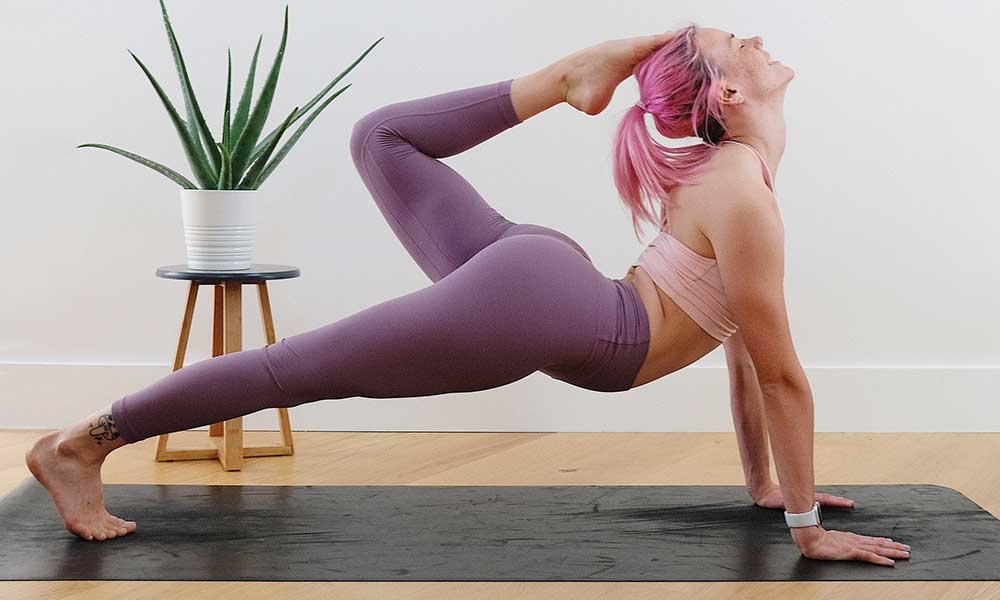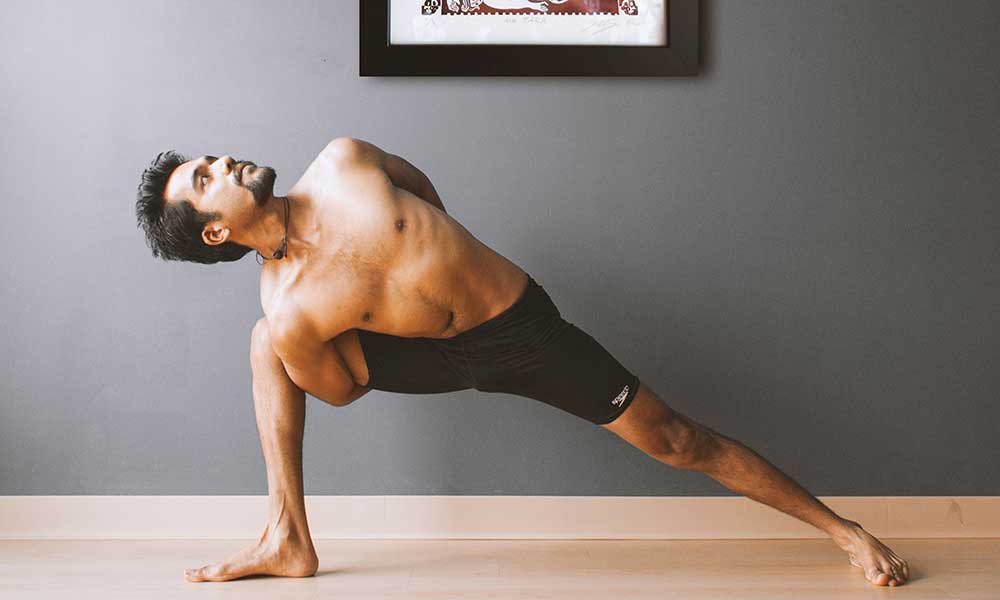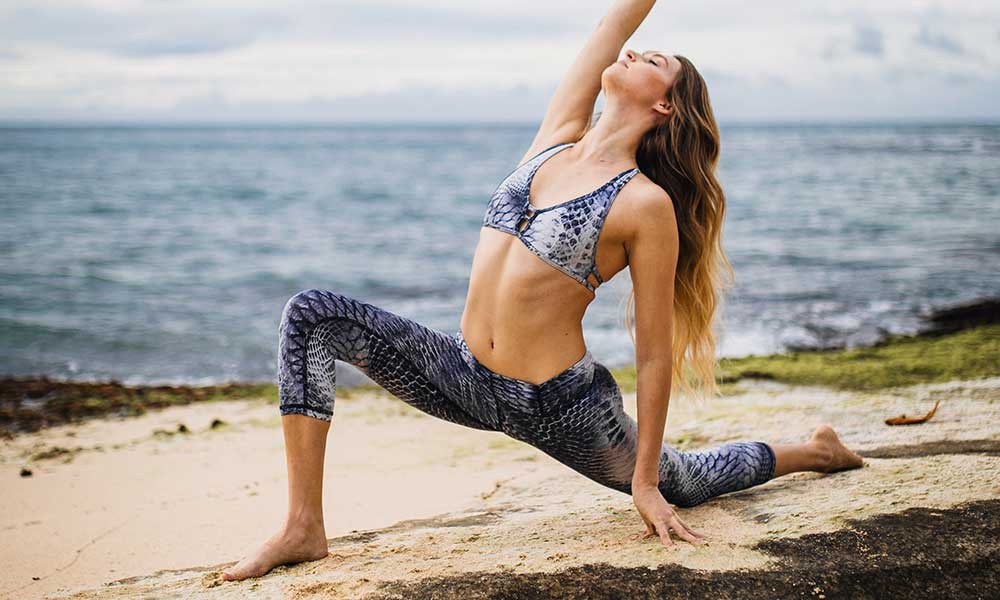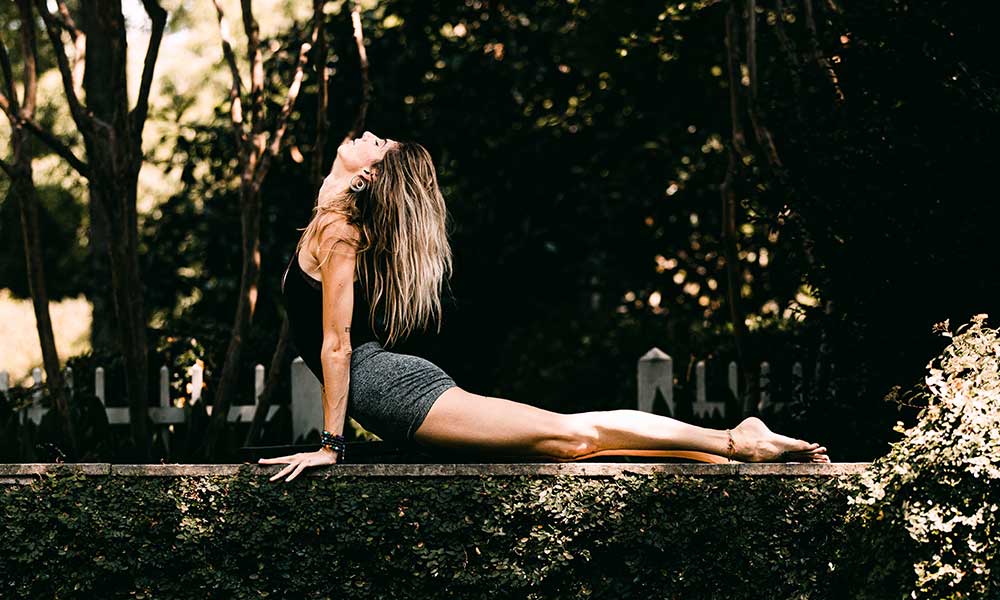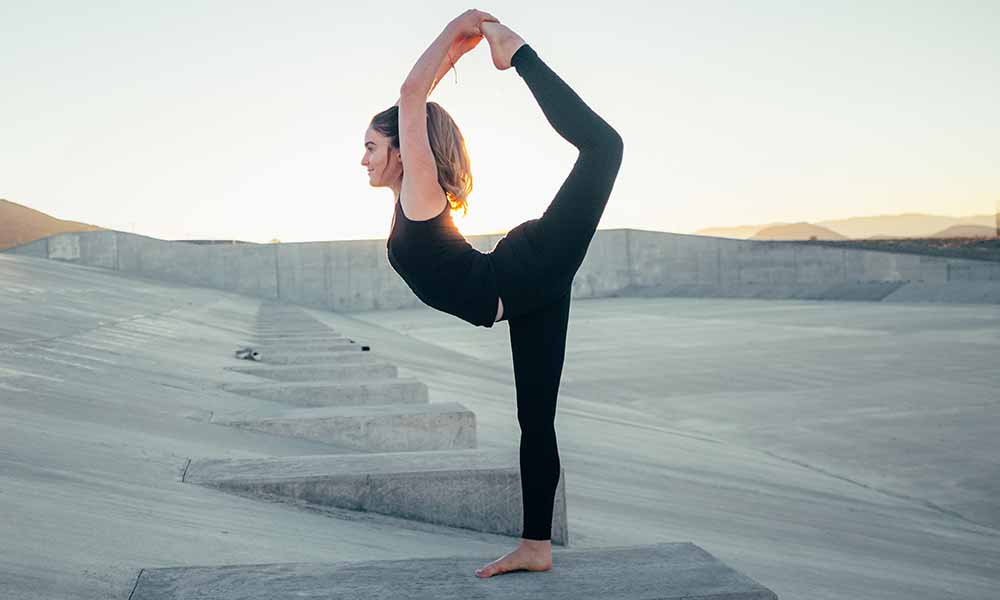It’s not uncommon for yoga studios to offer yoga in a heated room, but not all hot yoga classes are Bikram yoga.
Although it is often referred to as the “original hot yoga,” Bikram yoga is a type of Hatha, a traditional style of yoga consisting of postures and breathing exercises.
All Bikram yoga classes are 90 minutes long and consist of the same 26 poses, always occurring in a room that is exactly 105 degrees.
Bikram Yoga instructors must be Bikram-certified in order to teach, so a 200-hour or 500-hour RYT certification alone will not suffice.
Due to the challenging poses and the heated environment, you will need to take some safety precautions to get the most out of the class.
Here is what you need to know about Bikram yoga.
The History Of Bikram Yoga
The traditional yoga practice and philosophy that we know and love today began in Calcutta, India in the 1930s by Bishnu Ghosh.
Ghosh went on to mentor a handful of his most exceptional students, and in this group of mentees was Bikram Choudhury.
In the 1970s, Bikram was called to go to Japan and continue the Ghosh lineage teachings of yoga.
Soon after, he came to the United States and established The Bikram Yoga College of India in Los Angeles.
Since then, Bikram yoga studios have continued to emerge all over the world.
The practice is known for being a challenging, detoxifying experience that stretches your muscles and improves circulation in the body.
What To Expect In A Bikram Yoga Class
If you have ever experienced a hot yoga class, then you know that the heated room alone can be enough to get your heart pumping, but there are still mixed opinions about whether it counts as a cardio exercise or not.
The postures are low impact, so it’s safe to say that Bikram yoga is gentle on the joints.
Studies have shown that this style of yoga can improve strength, flexibility and support weight loss.
However, this type of yoga has also caught its fair share of backlash for its level of intensity.
Critics of the classes argue that the combination of a hot yoga room and deep yoga poses could be too strenuous, loosening up the body more than what is needed.
When we stretch in a heated environment, it limbers up our muscles, sometimes leading us to push ourselves past our normal limits.
Due to the high heat, Bikram yoga could also be dangerous for yogis with high blood pressure, heart problems, and those susceptible to dehydration or heat stroke.
Safety Precautions
This is a class where you can be sure to sweat a lot, so it’s important that you take the following safety precautions to get the most of your yoga practice:
- Get hydrated and stay hydrated: These classes can really take a lot out of your body, so you will need to start thinking about your hydration well before it is time to go to your class. Start drinking a lot of water 24 hours before your class and try not to abstain from eating for 1-2 hours before your yoga class so that you don’t get nauseous. Consider adding electrolytes to your pre-Bikram hydration routine and be sure to bring a water bottle with you to class!
- Dress comfortably: You will want to make sure that the clothing you wear to class won’t chafe and is still easy to move in when wet.
- Bring your own equipment: Most yoga studios have extra yoga mats on hand in case you need one, but it’s always best to bring your own. You will also want to bring a towel (or two) to wipe the sweat on your face and on the mat! Be careful not to wipe the sweat off your body too much, however, since sweat is there to keep our bodies cool. Wiping off sweat can decrease your body’s ability to adjust to the hot room and can make the practice that much more difficult.
- Make sure to let the yoga instructor know about any medical conditions or injuries that you might have before the class begins.
- Listen to your body: As always, the most important thing you can do during a yoga class is to listen to your body. If something isn’t feeling good or if at any point you begin to feel dizzy, allow yourself to take as many breaks as necessary.
Frequently Asked Questions (FAQ)
Here are some of the most common questions people have about Bikram yoga.
How hot is Bikram yoga?
All Bikram yoga classes take place in a 105-degree room.
What makes Bikram yoga different?
Bikram yoga is a practice where the same 26 postures are done in every class.
It is specifically 90 minutes long and takes place in a room that is 105 degrees.
In other styles of yoga, there aren’t as many restrictions and necessities regarding the temperature of the room, length of class, and postures.
What is the purpose of Bikram yoga?
The purpose of Bikram yoga is to strengthen muscles, improve flexibility and sweat out toxins in the body.

